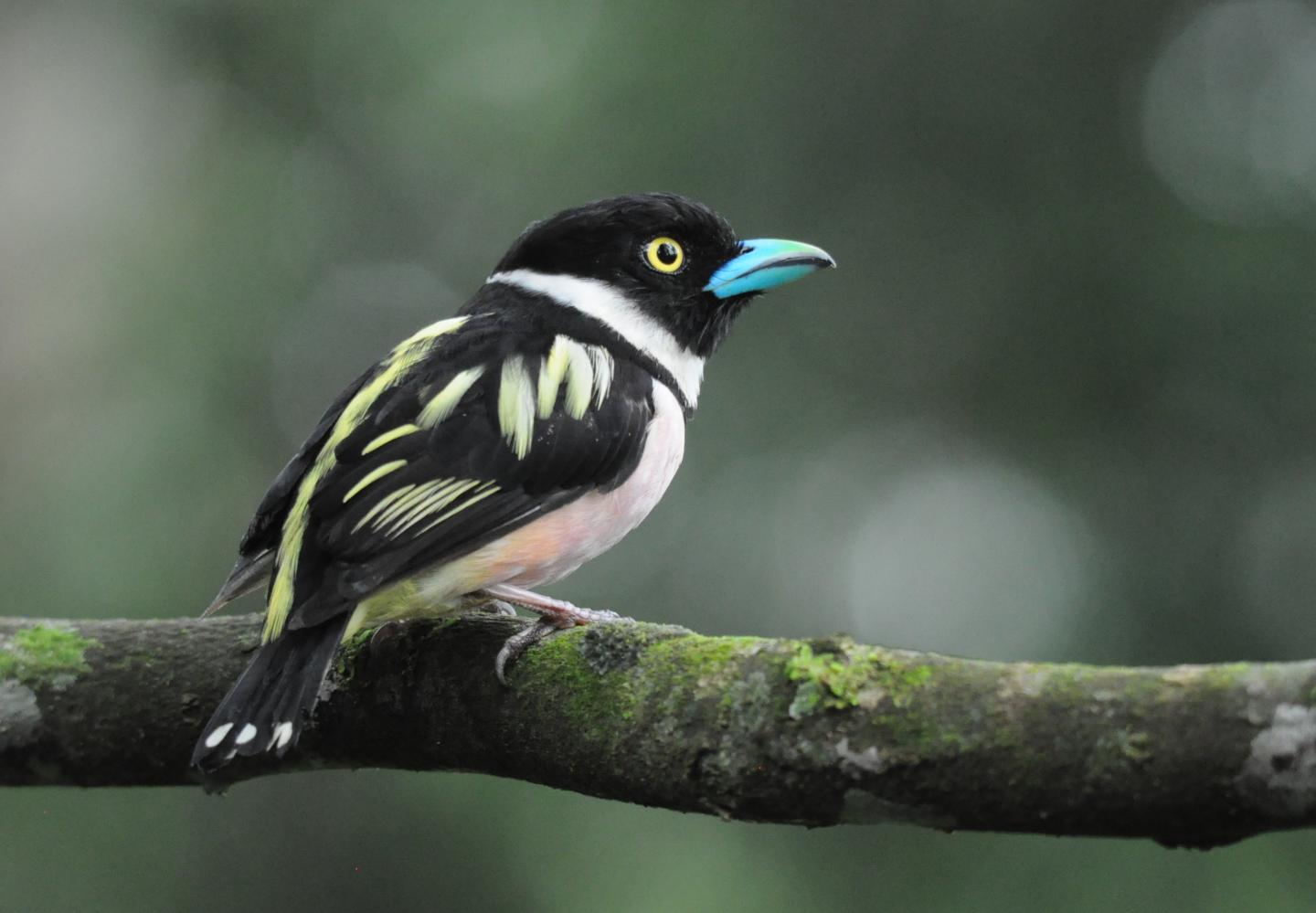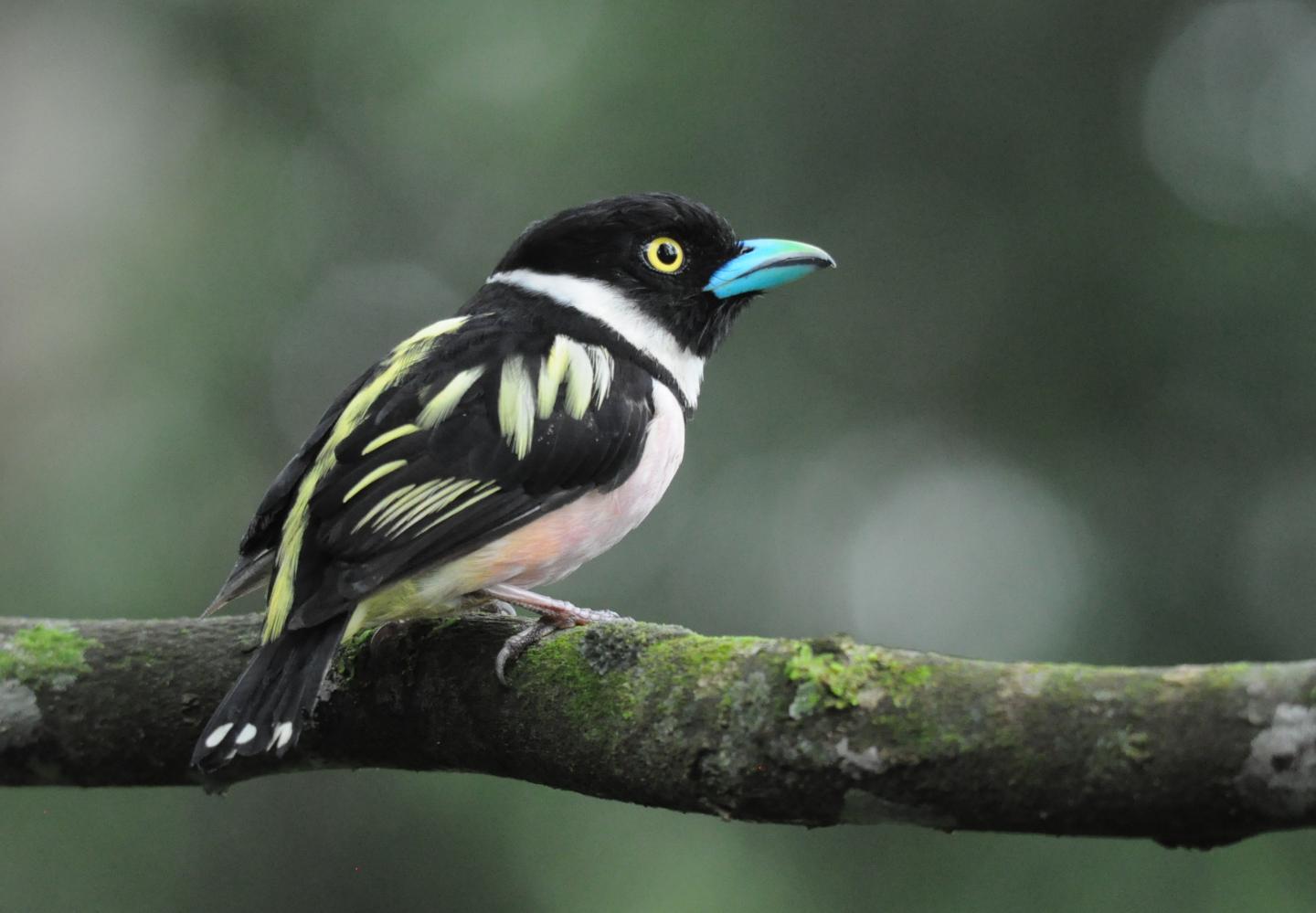
Credit: Simon Mitchell
Protected riverbank habitats within areas of oil palm cultivation can play a key role in reducing the negative impacts on tropical bird numbers but need to be increased in size, new research from the University of Kent has shown.
Converting rainforests to oil palm plantations has well documented impacts on tropical wildlife, including birds. But so far there has been little research on the value natural vegetation in river areas in plantations has for nature, although these are often preserved for water management as 'riparian reserves'.
However, a new study, led by the Durrell Institute of Conservation and Ecology in the School of Anthropology and Conservation at the University of Kent, in partnership with Universiti Malaysia Sabah, demonstrates that riparian areas can help to lessen the negative impacts of oil palm cultivation on bird communities.
The team counted birds across 28 rivers at a site in Malaysia and were able to examine their findings in relation to the width of the protected forest alongside the rivers. The study showed that large riparian reserves tend to support more bird species, with the largest ones hosting similar number as nearby forests.
Overall, the researchers found that a single river site might support around a third of all the bird species found in adjacent forests.
Furthermore, the authors were able to show that the best rivers for protecting bird populations in oil palm areas had more than 40m of forest vegetation protected on each bank, which helped provide shelter and resources for the birds. However, to ensure all the forest-dependent bird species were represented, the width of this protected riparian area would need to be at least 100m on each bank.
Lead author Simon Mitchell said the findings underlined the potential to protect some bird species within landscapes affected by palm oil cultivation
'We show that even small increases to the width could lead to big improvements for birds. This could be really important if we are to find better ways of maintaining biodiversity in agricultural landscapes.'
The researchers hope their findings will lead to oil palm companies increasing the width of riparian reserves protected in new plantations, or restoring more vegetation in old ones. Stricter environmental policies in tropical producer countries could also help improve the protection of riparian reserves.
###
The findings have been published in the Journal of Applied Ecology under open access entitled Riparian reserves help protect forest bird communities in oil palm dominated landscapes.
For further information or interview requests contact Sandy Fleming at the University of Kent Press Office.
Tel: 01227 823581
Email: [email protected]
News releases can also be found at http://www.kent.ac.uk/news
University of Kent on Twitter: http://twitter.com/UniKent
Established in 1965, the University of Kent – the UK's European university – now has almost 20,000 students across campuses or study centres at Canterbury, Medway, Tonbridge, Brussels, Paris, Athens and Rome.
It has been ranked 22nd in the Guardian University Guide 2018 and in June 2017 was awarded a gold rating, the highest, in the UK Government's Teaching Excellence Framework (TEF).
In the Times Higher Education (THE) World University Rankings 2015-16, it is in the top 10% of the world's leading universities for international outlook and 66th in its table of the most international universities in the world. The THE also ranked the University as 20th in its 'Table of Tables' 2016.
Kent is ranked 17th in the UK for research intensity (REF 2014). It has world-leading research in all subjects and 97% of its research is deemed by the REF to be of international quality.
In the National Student Survey 2016, Kent achieved the fourth highest score for overall student satisfaction, out of all publicly funded, multi-faculty universities.
Along with the universities of East Anglia and Essex, Kent is a member of the Eastern Arc Research Consortium (http://www.kent.ac.uk/about/partnerships/eastern-arc.html).
The University is worth £0.7 billion to the economy of the south east and supports more than 7,800 jobs in the region. Student off-campus spend contributes £293.3m and 2,532 full-time-equivalent jobs to those totals.
Kent has received two Queen's Anniversary prizes for Higher and Further Education.
Media Contact
Sandy Fleming
[email protected]
44-012-278-23581
@UniKent
http://www.kent.ac.uk
Related Journal Article
http://dx.doi.org/10.1111/1365-2664.13233





